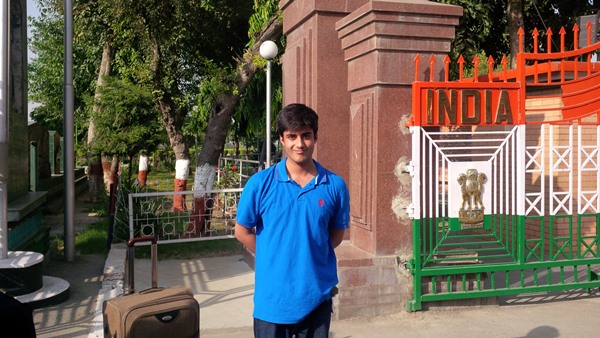 Crossing the border
Crossing the borderI was excited of course, but at the same time, I was lost in my thoughts.
In their teen years, my grandparents had made the decision of their life – to migrate from their native village near Ludhiana to Lyallpur in 1947. Although both were parts of Punjab, the Partition had now separated the two logistically. Now, I was the first one in my family – and interestingly of the same age my grandparents were during their treacherous journey – to get a chance to explore the other side of Punjab.
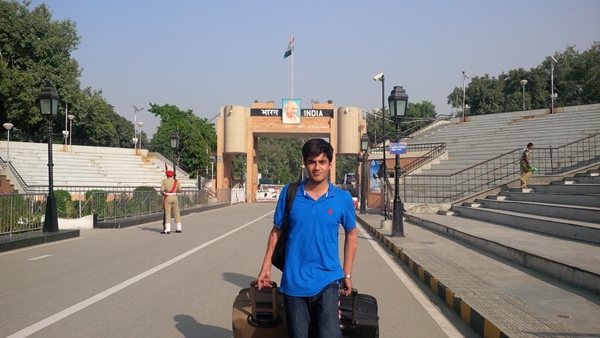 The other side of the Wagah border
The other side of the Wagah borderDuring this journey, I was not just visiting another country, but travelling back in history, wishing to comprehend the circumstances that had made South Asians stand divided today, politically and emotionally. I promised to dissociate myself from all sociopolitical and religiopolitical expectations I had found myself groomed with, and to give ambiguity a chance. I decided to question myself freely, and excavate for answers by travelling through a time machine.
As I learnt the new word “dhanyawad” (thank you), an alternative for “mehrbani”, I rummaged for the roots of this civilisation. I found myself in Mehrgarh, somewhere between 5,500 and 7,000 BC. Here, I found language; intricate script carved in stone, as well as a well-planned street grid and an elaborate drainage system. These spoke of a civilisation where all lived together in harmony.
As I skipped through millenniums, I found the population expanding and spreading immensely; from Mehrgarh, the urban civilisation had now spread across the subcontinent. In 230 BC, I found Ashoka ruling from Kandahar (modern-day Afghanistan) to Yerragudi (Andhra Pradesh, India). He was a recent convert to Buddhism, a new tradition that had emerged from the Sramana movement. I found followers of other movements, such as Jainism, Charvakas, Ajvikas and Hinduism, living in his empire as equals. This was a true egalitarian society, I thought. Why would it be otherwise, I questioned, as I found the Edicts of Ashoka on boulders and cave walls dispersed throughout his empire. The following one in particular fascinated me:
“The beloved of the gods, King Piyadasi (Ashoka), honours both ascetics and the householders of all religions, and he honours them with gifts and honours of various kinds. But the beloved of the gods, King Piyadasi, does not value gifts and honours as much as he values this – that there should be growth in the essentials of all religions.”
Many millenniums later, as I read the songs of Kabir, someone considered both a Sufi and Brahmin saint, I found Ashoka’s teachings still prominent. I wondered how a free-thinking individual like him had not been executed by the Delhi Sultanate, a state supposed to be “Muslim”. However, I found Sultan Sikandar Lodi impressed by Kabir’s work, especially him leading the Bhakti movement, which influenced devotional practices in religions including Islam, and particularly Sufism, Sikhism, Christianity and Jainism. According to legend, after his death, Muslims wanted to bury his body, while Hindus wanted to cremate it. Instead, they found nothing but flowers, which they divided for burial and burning. This tolerant and liberal thinking did nothing but overwhelm me as I visited the Golden Temple.
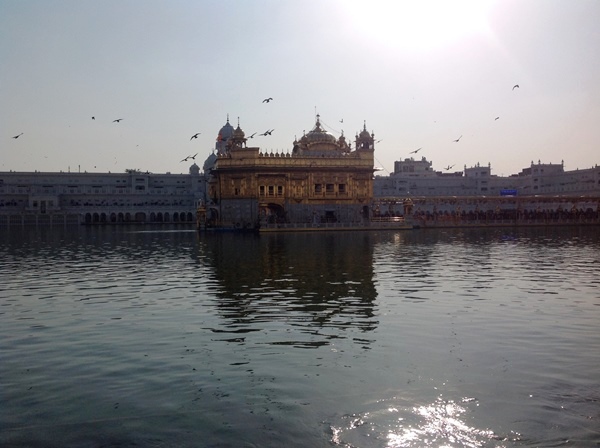 The Golden Temple
The Golden Temple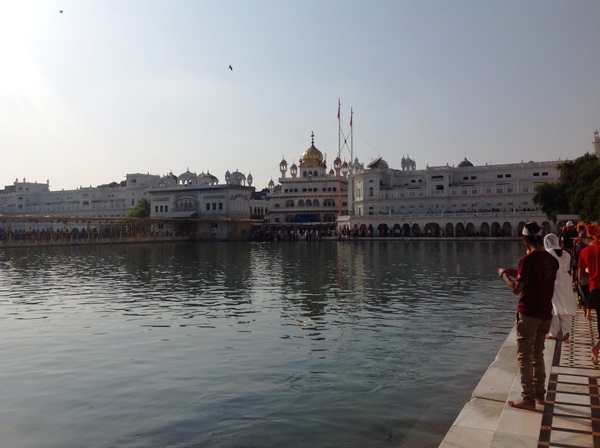
As I found myself visiting the Mughal Empire, I found pluralism to be this region’s greatest strength. Akbar had ruled from present-day Afghanistan in the west to Bangladesh in the east. While I had heard my schoolteachers at Aitchison College often criticising him for his “un-Islamic religion”, Din-i-Ilahi, I found it to be a sign of his tolerance, and the major reason for his success as an emperor. Through this syncretic tradition, he had intended to merge significant elements of the religions of his empire, to reconcile the differences that divided his subjects.
His buildings were an epitome of his tolerance too. On the central face of the Buland Darwaza, I found an inscription with the Christian message,
“Jesus son of Mary, on whom be peace, said, ‘The world is a bridge. Pass over it, but build no house upon it’.”
At the Ibadat Khana in Fatehpur Sikri, while I saw a mesh of Islamic, Sikh and Hindu architectural features, I found the Emperor sitting with religious scholars of all backgrounds discussing issues of mutual interests. Seeing the madrassas in Thatta (Sindh), I realised how Muslims of the time were provided knowledge of subjects ranging from theology and logic to mathematics and history. A “good” Muslim wasn’t characterised by the particular school of thought they belonged to, but rather, by their tolerance towards other traditions, which is a fundamental part of their faith.
Resultantly, an impressive balance was evident in the village community system. As a society based on mutual understanding, there was hardly any scope for communal friction. In such a tolerant environment, I saw Jahangir trusting a group of traders from Western Europe to bring back spice to support their economies. As I moved on, however, I saw these economic motives switching into political ones. I saw Lord George Curzon expressing,
“As long as we rule India, we are the greatest power in the world. If we lose it, we shall drop straightway to a third rate power.”
As political domination became a priority, I found the rulers least considerate of the society’s diverse culture and ways it had functioned since its advent. Diversity, the greatest strength of this region, was exploited to fulfil these political interests. A complete reversal of what Akbar had achieved, the differences amongst masses were aroused – a deliberate step in its entirety. I saw how General Reginald Dyer, who expected an insurrection, banned all public meetings on the day of Baisakhi, which had brought villagers to the Jallianwala Bagh. For their “disobedience”, Dyer took his army to the Bagh and continued firing on an open crowd, leaving scores killed.
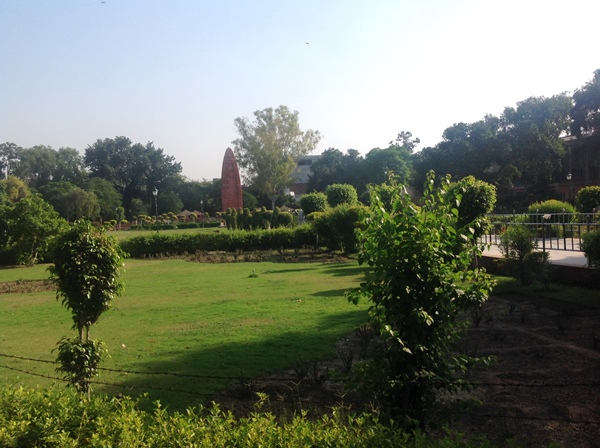 The Jallianwala Bagh
The Jallianwala Bagh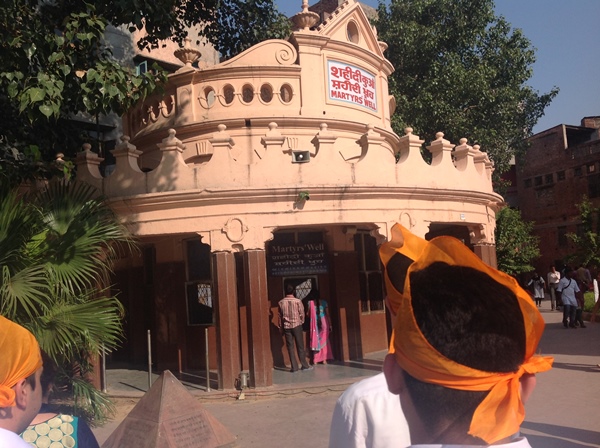 Martyrs Well at the Jallianwala Bagh
Martyrs Well at the Jallianwala BaghAs I exited the time machine and found myself pondering in this Bagh, I saw other tourists posing with these bullet marks. I reminded myself how these were marks of intolerance and hostility. Realising how rare it was for a Pakistani to be here, I found this place to be the historic turning point for pluralism turning into divisiveness. The world now made much more sense to me, especially after seeing the Golden Temple. I now knew exactly why Jarnail Singh had been killed, why the Akal Takht was damaged under Operation Blue Star, and what led to Indira Gandhi’s assassination.
 Bullet marks on the wall
Bullet marks on the wall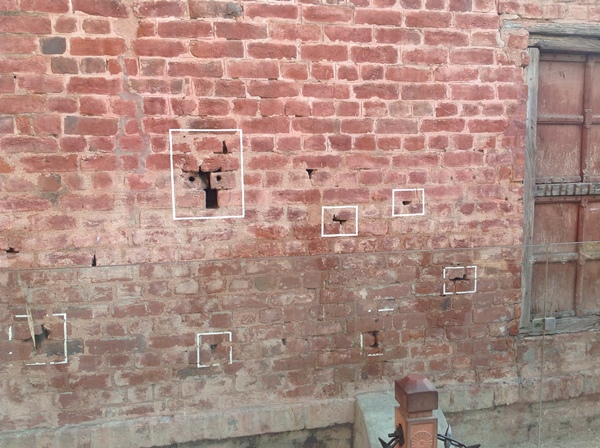
On my journey back from the Wagah Border to my home in Mughalpura, I felt pity while thinking about my grandparents, who had watched peace being undone through their eyes. While I realised how certain structural things like the Partition could never be reversed in the contemporary world, one must reassess their past.
As Pakistanis, Indians and Bangladeshis, it is important to know our real strength, which is diversity. By keeping this in mind, we could not only let go of our differences as nation-states, but also tackle internal issues such as sectarianism and political intolerance which have been damaging us since divisiveness became the new norm.
All photos: Ibrahim Tariq

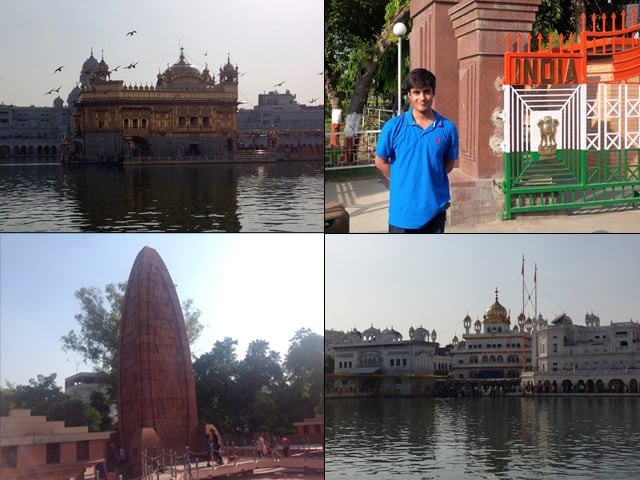
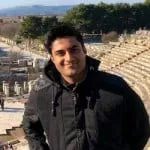
COMMENTS
Comments are moderated and generally will be posted if they are on-topic and not abusive.
For more information, please see our Comments FAQ